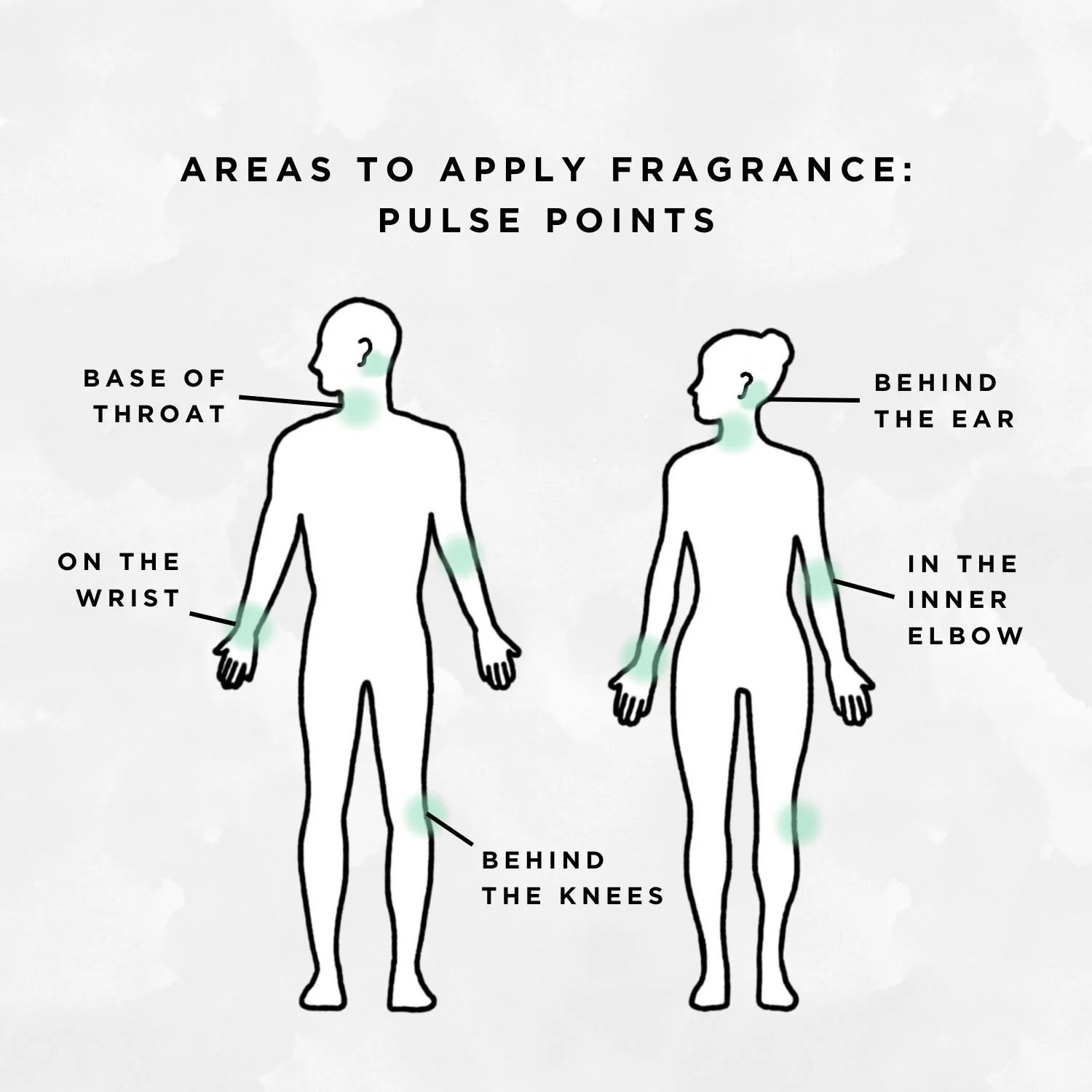A guide to wearing perfume
Connection Parfumerie

Why do some fragrances only last for a short while on my skin?
Skin acidity plays a significant role in altering how fragrance interacts with each individual. Various factors, such as hormonal shifts, recent dietary choices (like consuming spicy or garlic-rich foods), and medication intake, can modify how a fragrance smells and lasts on one's skin.
Consequently, this variability underscores the importance of personally testing perfumes on your skin when making a fragrance selection. Applying a small amount of the fragrance and allowing it to settle for 5 to 10 minutes helps provide insight into its compatibility with your skin chemistry.
Applying it to pulse points and refraining from excessive rubbing enables a genuine perception of the scent. Sniffing the fragrance in the fresh air can enhance the experience. During this "smell test," it's helpful to consider the emotions and sensations you desire the fragrance to evoke when worn.
A guide to wearing fragrances
 The most suitable areas for applying fragrance are pulse points, including the inner elbow, wrist, neck, and even the back of the knees. These locations benefit from increased blood flow and skin warmth, which enhances the scent's projection. A preferred approach is to apply fragrance to the back of the neck, creating a “fragrance scarf”.
The most suitable areas for applying fragrance are pulse points, including the inner elbow, wrist, neck, and even the back of the knees. These locations benefit from increased blood flow and skin warmth, which enhances the scent's projection. A preferred approach is to apply fragrance to the back of the neck, creating a “fragrance scarf”.
This allows intermittent wafts of scents throughout your day. This method also avoids the constant proximity of the scent beneath the nose which can cause nose blindness (not being able to smell your fragrance). Additionally, it helps to prevent potential skin sensitivities and damage to delicate areas like the décolletage, where combining fragrance, alcohol, oils, and sunlight can be problematic.
Furthermore, applying scent to well-moisturized skin, especially after a shower when the skin is warm, slightly damp, and freshly moisturized, can amplify the fragrance's longevity and overall effect.
